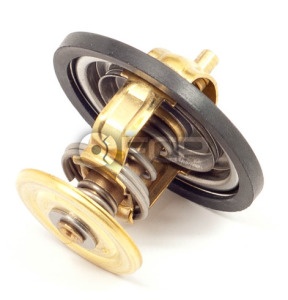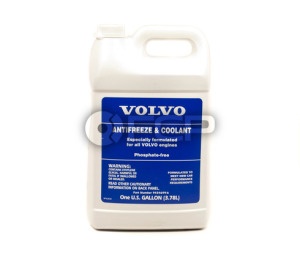As winter approaches, you may not think your cooling system should be at the forefront of your maintenance plan. However, an improperly serviced cooling system can wreak absolute havoc on a Volvo when the weather gets chilly. Ben is here to show you how to replace a Volvo 850 thermostat in under ten minutes. If you think yours is bad, there's no reason not to replace it ASAP.
Parts & Tools:
- T40 Torx Bit
- 13mm Socket (Radiator petcock)
- Volvo Blue Coolant
- Wahler 90ºC Thermostat
http://youtu.be/59mcLrSuDjg
Why replace?
If your car takes a long time to warm up, the thermostat may be stuck open. If a vehicle seems to be running hotter than it should (or overheating) the thermostat may be stuck closed.
A thermostat is nothing more than a radiator-flow control valve. When cold and closed, the engine's coolant circulates through the engine and heater core only. When hot and open, the thermostat allows the engine's coolant to flow through the radiator too, where it is cooled by outside air through driving or forced through by fans. When it's cold out and you want heat, there's no reason for the coolant to flow through the radiator while the vehicle is warming up. A thermostat allows a quick warm-up cycle and gets the hottest coolant into the heater core first to warm you up, automatically diverting coolant as needed.
A thermostat can open partially if the weather demands it. Sitting in NYC traffic in August would warrant a fully open thermostat with cooling fans blazing, but that would be too much cooling if driving around town on a 10ºF day in January. At the same time, driving around with a closed thermostat - even in January - would cause an overheat, so the thermostat will crack open slightly and let only a slight amount of coolant to be chilled by the radiator. Your cabin heater will be removing a great deal of heat from the engine at this point anyway.
A simple coolant tester will determine your car's fate this winter. Last year, I had a water-heavy coolant mix and the entire system froze at -17ºF, leaving me with a cracked radiator on the way to work. I was extremely lucky the engine didn't overheat. Now, I don't add coolant without making sure it's safe down to at least -25ºF, a temperature I'm unlikely to see in NY. A perfect 50/50 mix seems to achieve this for me, if not more.
Shop Volvo Cooling at FCP Euro
Alex is FCP's Blog Editor and an IT technician from Endwell, NY. He has over 8 years of experience working on a wide array of import makes, but lately is partial to Volvo . For some reason he just purchased a Volkswagen, and is excited to see what breaks first.














